When planes, trains and automobiles are not available to move your stuff, you do what you have to, to move your stuff. And that’s what we are seeing right now from Kathmandu to Everest Base Camp.
Pause for a moment and think about how much gear it takes to support a team, it can be overwhelming. Even a small team of a handful of climbers will have a couple of cooks, separate tents for dining, cooking and sleeping. Then the large teams add another few tents for storage and toilets. The high-end guides will have communications tent and even a “relaxation” tent.
All of this is at base camp where you live, eat and sleep for the better part of six weeks. Speaking of food, it also must be stored somewhere and there has to be fuel for the stoves, and sometimes heaters. Then there are generators, solar panels and on and on. Oh and don’t forget a few thousand oxygen bottles.
As you go higher, climbers share tents and often eat in the cooking tent. Then there are the fixed ropes with snow bars, pitons, carabiners, ladders and everything else you need to actually move up the Hill. Regardless, the problem remains of how to get that gear up there.
So how does all the stuff get to base camp? On the Tibet side, it’s straightforward. Huge trucks haul it in on paved roads. However, it’s a different story on the Nepal side. Since Everest is within the Sagarmatha National Park where motorized vehicles are not allowed on the trails, everything is transported on the backs of people or animals or in a heavy duty helicopter. Lets first look at how the expeditions move their group gear to base camp and then how the personal gear is handled.
AirYak

It may seem obvious to just use a helicopter to ferry tons of tents, stoves, fuel, etc. from Kathmandu to the foot of the Khumbu Icefall, but they are expensive and risky. If one goes down with all your gear, your season might be lost. Usually a version of a Russian cargo helicopter flies gear to a relatively low landing strip close to Namche Bazaar, at Syangboche, at 12,410’/3782m. Any higher might be impossible given the heavy loads. From there, the gear is shifted to animals and people.
Most expeditions use a combinations of animals – yaks and dzomos aka dzo. This last beast is a cross between a yak and a cow and can haul loads under 14,000 feet. They are smaller than yaks but not as happy! OK, so how do I know? Well all I know is that I get happy seeing a yak, so they must be happy as well. 🙂
All kidding aside, yaks are huge furry beast of burden that can seemingly go forever at glacial speed. They are colossal animals with a full-grown male weighing in at 1,400 pounds and standing 5.5 feet at the shoulders. Yaks have three times more red blood cells than regular cows thus can go higher than their cross-breed siblings. Also their long, thick hair insulates their bodies from winter temperatures that can plummet to -30C (-22F) or colder.
Continuing with “more than you wanted to know about yaks”, they are most comfortable above 14,000 feet probably due to generations of genes nurtured on the high Steppes of Tibet where Nomads constantly moved them between summer and winter pastures at 14,000 to 16,000 feet high. They will forage for food as high as 20,000 feet in the summer but usually don’t go lower than 12,000 feet. Today, many yak owners in Nepal will not let them go lower than Namche fearing malaria, parasites or other diseases, often carried by cows, sheep and goats. They are treated very well by their owners due to their cash value from expeditions and then their meat at the end of life.
Back to how they are used. Yaks can carry about 150 pounds/70 kilos and cost $40 per day to carry 120 pounds to Base Camp.
Human Beast of Burden
While seeing yaks often please trekkers, seeing a porter on the trails in Nepal often stuns first time visitors. They are young, perhaps even 12, and are almost always not of Sherpa ethnicity, more like Rai from the Southern part of Nepal. They can earn good money but the work is unbelievable physical. While a yak will carry about 10% of it’s body weight, a human porter may carry as much as 100% – yes they carry their own weight on their back.
There have been multiple scientific studies on how they can carry such huge weight at extreme altitude day after day. The tricks seem to include good parents, walking very slowly and taking many breaks. They use a trump line to transfer some of the load from their legs to their skeletal system and finally, counterintuitive as it may seem, their small size seems to work to their advantage. This is the conclusion from one extremely well done study: Himalayan porter’s specialization: metabolic power, economy, efficiency and skill.
In conclusion, the remarkable performance of Nepalese porters is determined by a more powerful ‘engine’ in a smaller body and by a lower cost of loaded walking. The long-lasting and specific training in hypoxia led to a surprisingly specialized adaptation of this ethnic group to the challenging environment. Owing to the experimental design, we can exclude that porters’ better economy of loaded walking on gradients is related to a better exchange between potential and kinetic energy of the body centre of mass. We suggest that the cost of balancing the loaded head–trunk segment is a promising candidate and deserves further investigations.
For all this work, a porter can earn $20 per day carrying 60 lbs, but often they carry double (120 lbs) or even triple (180 pounds) to maximum their earnings and the trip. There are rules set forth on the Nepal side by the Nepal Ministry of Tourism, but as most rules in Nepal they are largely ignored by all but the most ethical operators. A low-altitude porter is limited to 66lbs/30kg and a High Altitude Porter aka Sherpa (terrible misnomer) cannot carry more than:
- 5000-6000 meters 44lbs/20kg
- 6000-7000 meters 37lbs/17kg
- 7000-8000 meters 30lbs/14kg
- 8000+ meters 26lbs/12kg
WHY?
By now you are probably wonder, do you really need all this “stuff”, as George Carlin liked to point out.
Well, that is a great question but is appearing less important as Everest continues to compete on luxury. Most expeditions, regardless of costs seem to offer: unlimited access to the internet, movies on a wide screen after dinner each night in the heated dinning tent, storage tents, sleeping tents, clean toilet tents with hot showers.
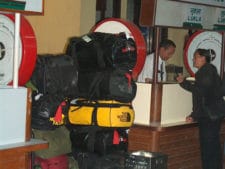 As for the members themselves, most are limited to a pair of 60 pound duffel bags, but like everything on Everest, that negotiable. So many bring pounds of their own food, full size bed pillows, jeans and running shoes for camp and more. All of this adds up and this why the price continues to go up for some high-end guides. The customers want it, and the guides meet the market demand.
As for the members themselves, most are limited to a pair of 60 pound duffel bags, but like everything on Everest, that negotiable. So many bring pounds of their own food, full size bed pillows, jeans and running shoes for camp and more. All of this adds up and this why the price continues to go up for some high-end guides. The customers want it, and the guides meet the market demand.
If you want evidence, the low-cost operator in Nepal, Seven Summits Treks, has seen the future and now offers a VVIP Package with the promotion:
If you want to experience what it feels like to be on the highest point on the planet and have strong economic background to compensate for your old age, weak physical condition or your fear of risks, you can sign up for the VVIP Mount Everest Expedition Service offered by Seven Summit Treks and Expeditions. This service facilitates you to experience the feeling of accomplishment that one gets while succeeding in an adventurous sports, all while providing highest levels of safety and comfort that can be imagined in such a difficult landscape.
This will cost you $130,000. Hold on, they already sold two for 2018 …
Your Stuff
As for getting personal gear to base camp, once again it’s the job of human and animals. Gear is divided into trek duffels and base camp duffels. The BC stuff goes direct, usually on yaks and the trek gear, on the back of a porter, follows the climber/trekker day after day to the teahouse that night so they can change into comfortable clothes and sleep in their own down bag. The members only carry a small day pack with a liter of water, a candy bar or two, their camera and a warm jacket.
Perspective
At this point I know you are scoffing at all these luxuries and how members are so pampered but let me leave you with this thought. Even the early Everest expeditions had “luxuries”. Mallory often trekked in the nude (not sure that was a luxury, but apparently it was for him!), other early expeditions made sure there was plenty of brandy and whisky and tables with tablecloths.
For whatever reason life at base camp has never matched the hardships of the actual climb and that may well be the point.
Climb On!
Alan
Memories are Everything

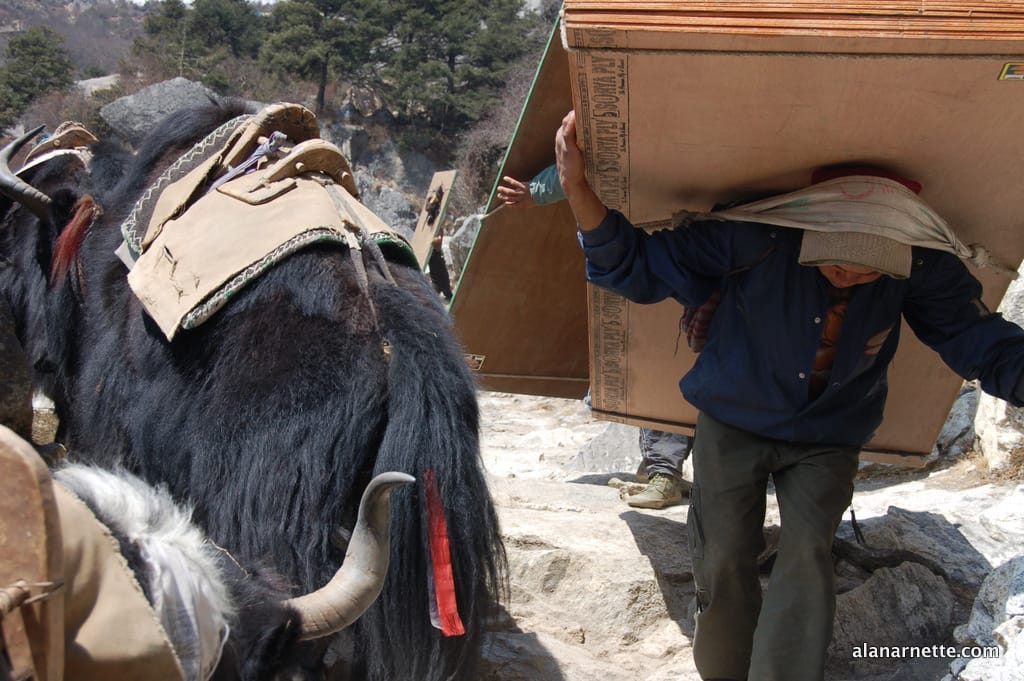
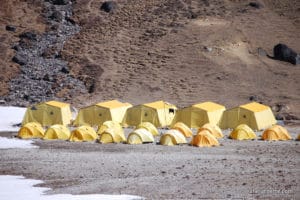
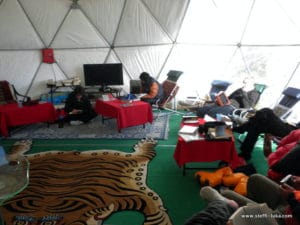
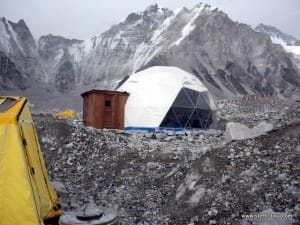
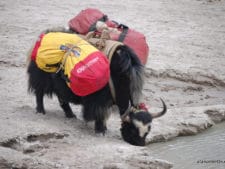
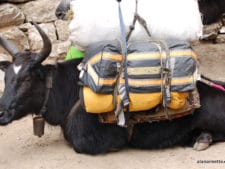
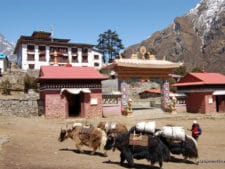
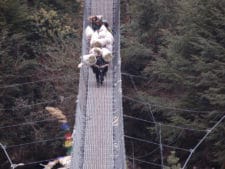
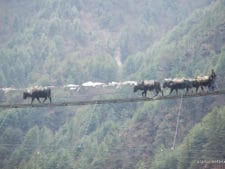
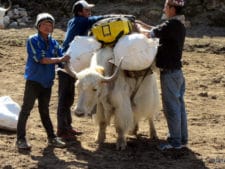
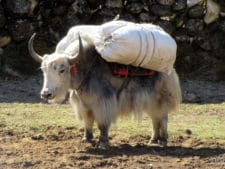
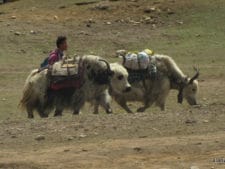
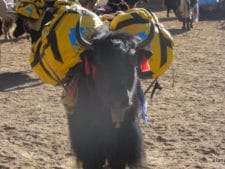
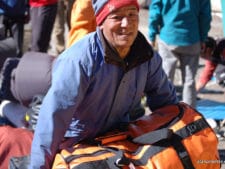
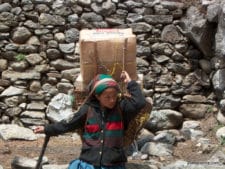
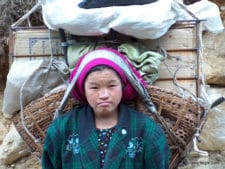
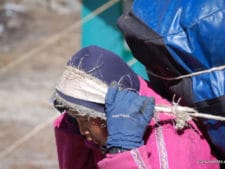
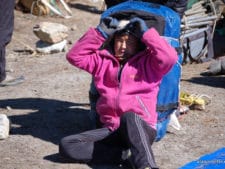
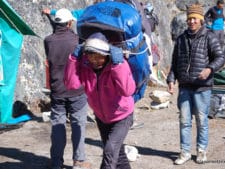
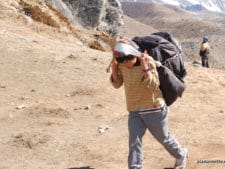
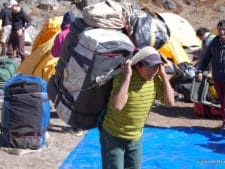
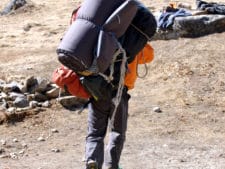
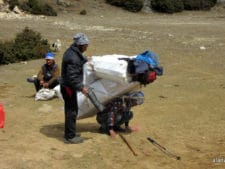
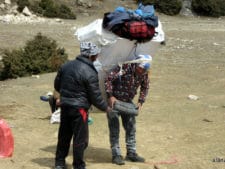
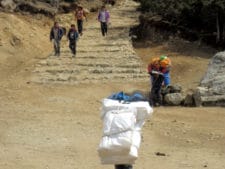
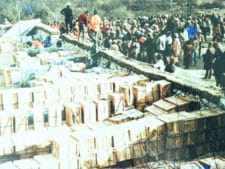
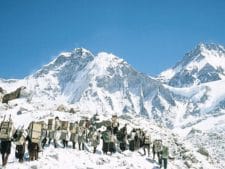
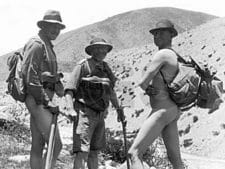


2 thoughts on “Everest 2018: Zos, Yaks, Porters and Helicopters”
Hi Alan.
I am very excited to be reading your posts this year, Alan. Last year’s were excellent. Phil from Perth Australia
Another great & interesting article, Alan. Thanks.
Comments are closed.